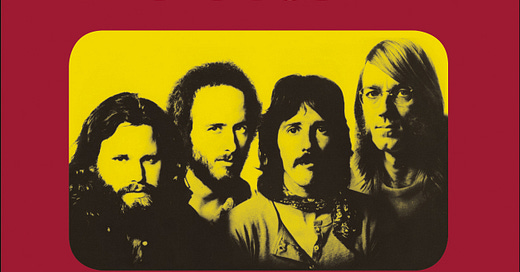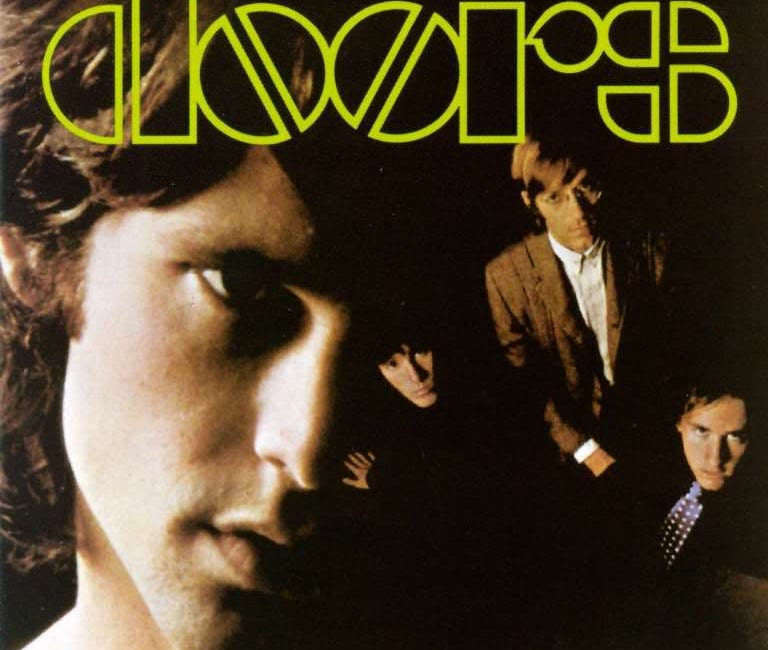For a band that I’m not strictly sold on as an all-time great, I’m not sure their debut should be ranked 36th on Acclaimed Music for all time, 13th for the decade and 4th for 1967, ahead of fare like Innervisions, A Love Supreme and Forever Changes, respectively. The Doors certainly hit not one but two classic closing tracks out of the park. ‘The End’ is an all-timer and one of the best examples of closing out any album, whether or not the rest of that side of vinyl before it is a few orders of magnitude less fantastic.
Beautiful friend
Saigon... sh1t; I'm still only in Saigon Captain Benjamin L. Willard - Apocalypse Now (1979) You can hear it already, can’t you? The thrum of a helicopter’s rotor dissolving into the whirring of the ceiling fan in Willard’s room. Let’s give the people what they want;
The second of their great closers is on their second-best and final record: 1971’s L.A. Woman. While decades of association with the opening scene of Francis Ford Coppola’s Apocalypse Now means we can imagine the helicopter/ceiling fan dissolve out of context, we don’t need to use any imagination or recall for the ambient sound on ‘Riders on The Storm’. We start with the sound of a thunderstorm, that natural sound providing the bedrock for Ray Manzarek’s evocative electric piano trill, which comes drifting in on notes of a Fender Rhodes as rainfall sets the dreamlike quality of the song’s opening and immerses us in the track.
As iconic as that electric piano is, the song is not merely a showcase for Manzarek. Robby Krieger's guitar work on the track is subtle but very effective. His use of reverb and delay complements the song's stormy atmosphere, weaving in and out of the soundscape like gusts of wind. Session musician Jerry Scheff's bass and especially John Densmore's drumming on ‘Riders on the Storm’ are also understated yet entirely appropriate. Densmore’s use of brushes instead of sticks creates a soft, rhythmic pattern that mimics the sound of rain, and, honestly, can you really imagine the song with someone thwacking along, Keith Moon style?
Jim Morrison's vocals on this track are especially noteworthy, as they were his last recorded with the band before his death. His voice on ‘Riders on the Storm’ would feel hauntingly melodic and match the ethereal feel of the track without this context, and I don’t want to make it sound like I believe it is a subconscious farewell, but you could be forgiven for thinking that. The soft, whispering style is a world away from the grunts and yelps found on songs like ‘Break On Through (To the Other Side)’
Morrison’s lyrics are reflective and poetic, as many of his words often were. They touch on themes of existentialism and mortality – concepts Morrison was deeply interested in, partly influenced by his reading of philosophers like Martin Heidegger. Heidegger's focus on individual existence can be felt in the song's contemplation of life's transient nature. The western song ‘Ghost Riders in the Sky’ also influences the lyrics and the plot of the 1953 film The Hitch-Hiker.
The recording sessions for L.A. Woman in November 1970 started on a tumultuous note. Early into the process, tensions arose between The Doors and their long-standing producer, Paul Rothchild. Rothchild, reportedly disillusioned with the direction the band was taking and faced with Morrison's erratic behaviour exacerbated by alc0hol, decided to step down from his role just two weeks into the sessions. In the wake of Rothchild's departure, The Doors took a bold step, taking the production reins into their own hands. They were supported in this endeavour by their experienced engineer, Bruce Botnick, who played a pivotal role in guiding the album’s production.
There's a widely held notion that ‘Riders on the Storm’ was the track that prompted the Doors' long-time producer, Rothchild, to dismissively label it as "cocktail music”. Robby Krieger has supported this account. However, Rothchild contested this version of events, insisting that his criticism was directed at ‘Love Her Madly’.
Botnick has said
It’s hard to remember the exact chronology – unfortunately, a lot of the tape boxes and outtakes were destroyed – but ‘Riders On The Storm’, like everything else, took only two or three takes and, as an afterthought, we recorded Jim’s whispered vocal. We all thought of the idea for the sound effects, and Jim was the one who first said it out loud: ‘Wouldn’t it be cool to add rain and thunder?’ I used the Elektra sound effects recordings, and as we were mixing, I just pressed the button. Serendipity worked so that all the thunder came in at all the right places. It took you somewhere. It was like a mini-movie in our heads.
After recording, Morrison went to France. In 2007, Manzarek told Uncut magazine;
It was the last song recorded by The Doors and the whisper voice is the last singing that Jim ever did in the studio, in the background on the ride out. How prophetic is that? A whisper fading away into eternity, where he is now. Viewing it from the outside, you can put a neat little bow on it and see it as our last performance, but for us we were just playing intensely.
The song was released as a single in June 1971; Morrison had died before July was even a week old.






A haunting song